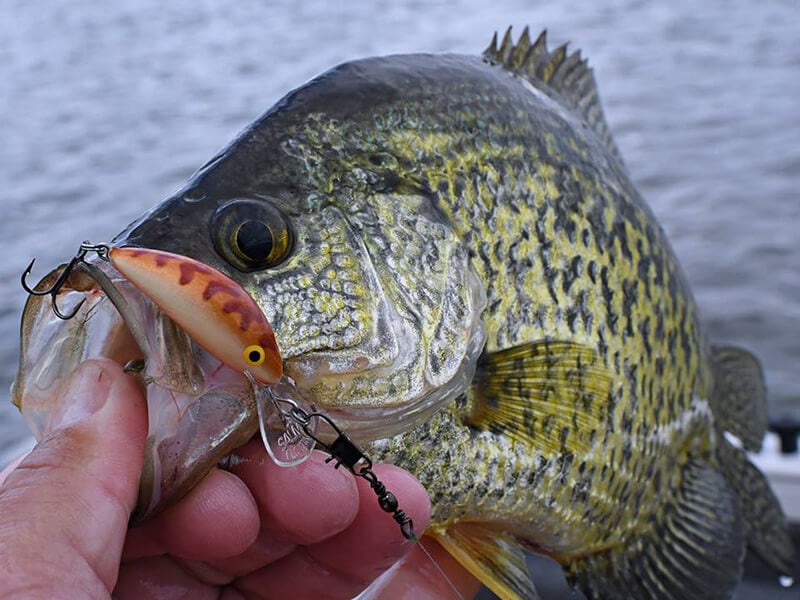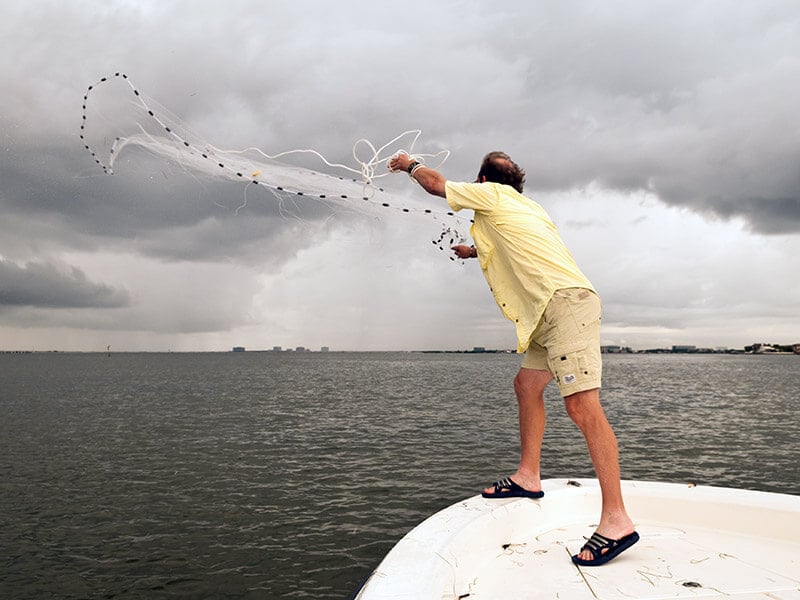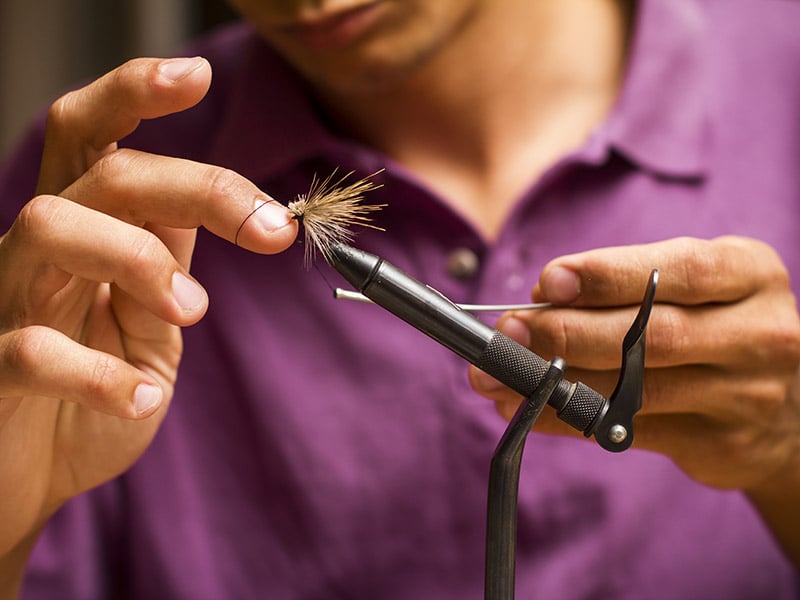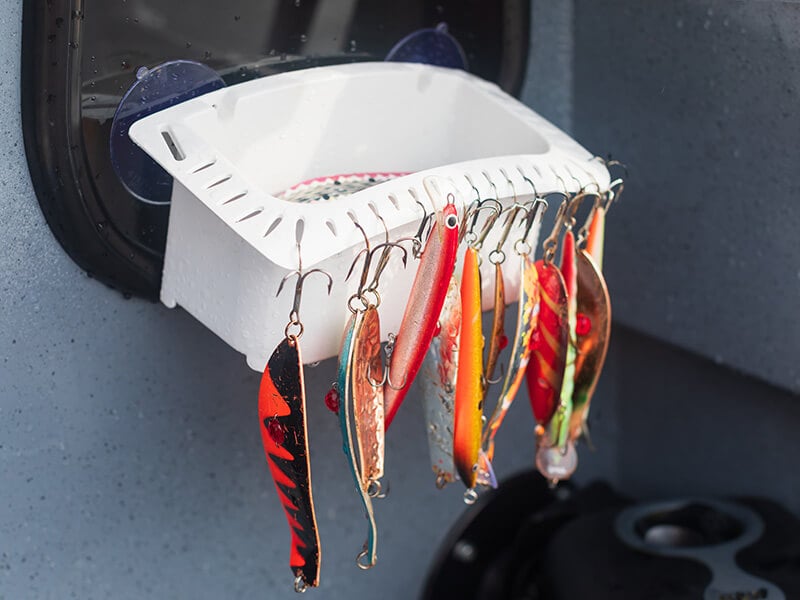Fishing bait is one of the most important parts of an angler’s entire setup. It doesn’t matter if you’re chasing world records or just hooking something for dinner, it’s your bait that will tempt it onto the hook. Get it right, and you’re in for a fight. Get it wrong, and the fish will ignore or even actively avoid you.
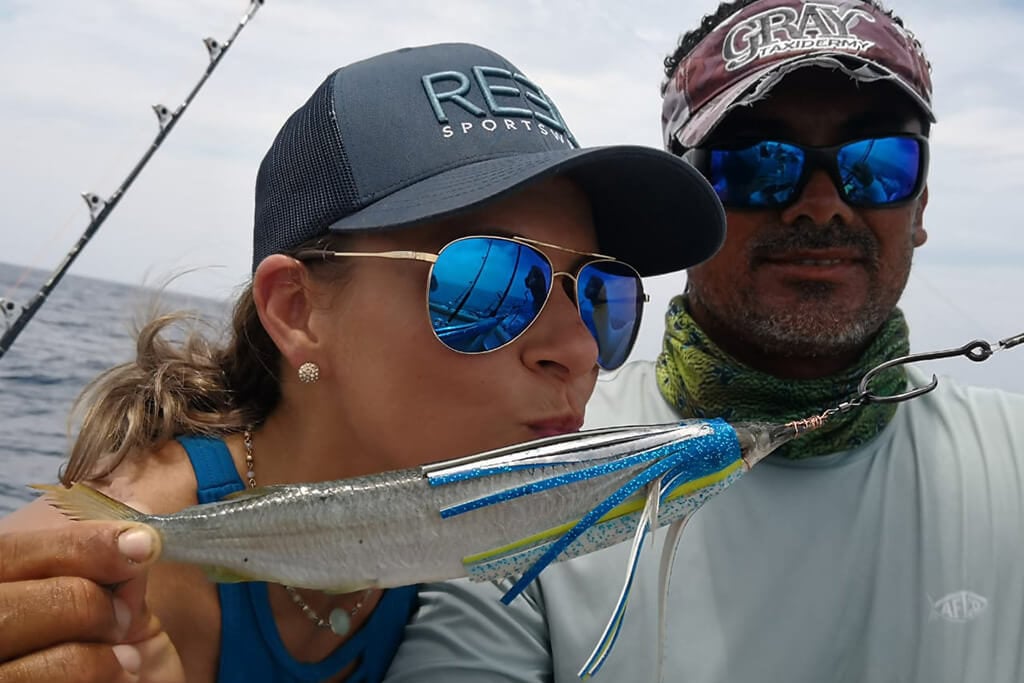
The problem is, you have so many options for baiting your hook that it can be tough to know where to start. Not anymore. We’re here to break down everything you need to know about bait, from the main types and uses to how to choose them, to where to get hold of the best fish magnets out there. There’s a lot to cover, so let’s jump in.
Types of Fishing Bait
When most people think of fishing bait, they probably imagine a worm dangling off the end of a hook. That’s definitely a classic, but it’s just one example of one kind of bait. There are three main types of bait: Live, dead, and artificial. Here’s a quick intro to each one.
Live Bait
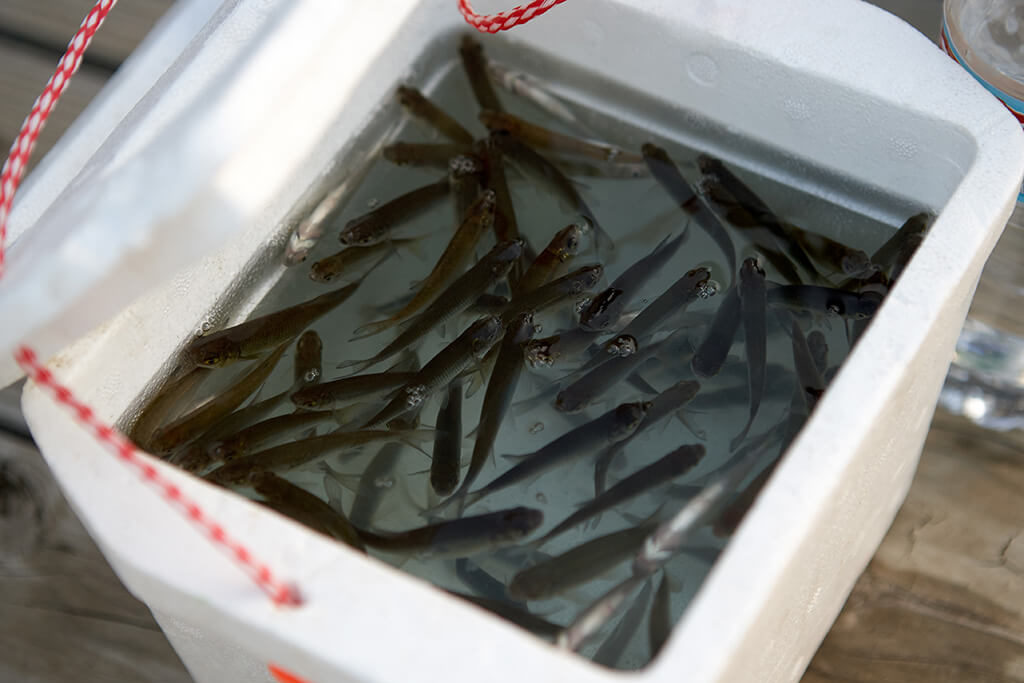
From bloodworms to ballyhoo, live bait is the go-to option on fishing charters around the world. Why? Simply put, it’s the most effective choice in almost any situation. The movement and scent live bait produces is irresistible to fish. All you need to do is drop it in and wait.
It’s not all smooth sailing, though. Live bait needs to be kept fighting fit if you want it to work well. For worms or crabs, that’s pretty simple. However, bait fish need to be kept in clean, oxygen-rich water. That's fine on a boat with a livewell, but more complicated if you’re fishing on foot.
And all that’s just maintenance. You also need to use the right bait for the species you’re after and the waters you're fishing in. That way, you know local predators will be used to it. Oh, and it's also pretty expensive in most places.
Dead Bait
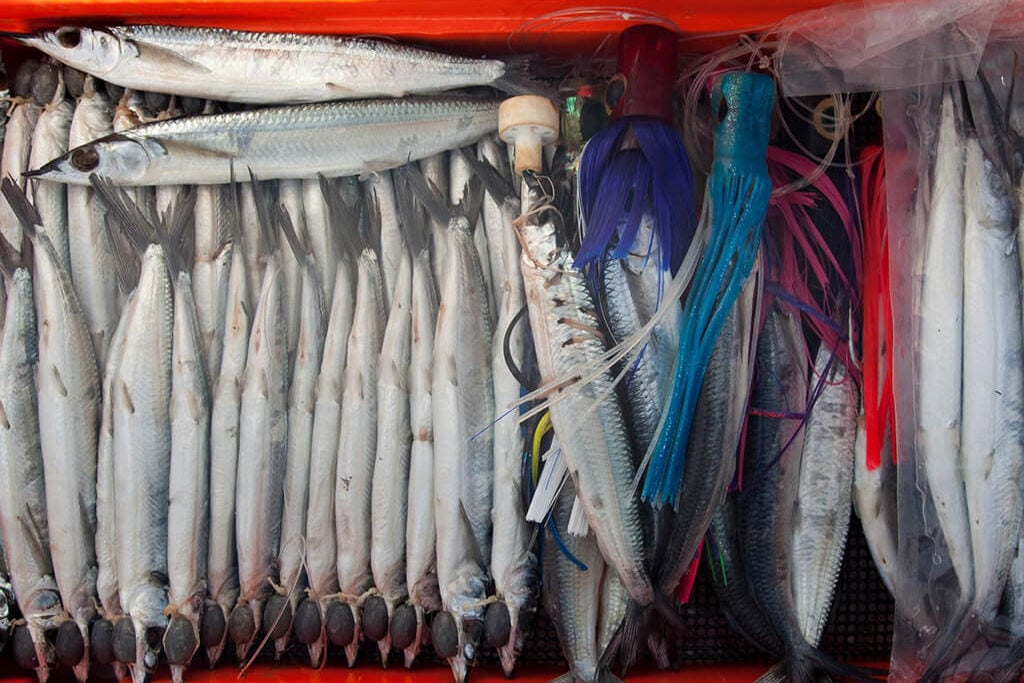
Dead bait has some obvious advantages over the real live stuff. For starters, you don’t need to keep it breathing – a real bonus if you’re traveling light. What’s more, freshly-cut bait gives off one heck of a scent trail. In fact, it can be the most effective option for scent-based hunters and murky waters.
You can happily fish whole dead fish or prawns as bait. However, people normally cut dead bait in strips or chunks. Strip baits hold well onto the hook, perfect for softer bait like squid. Chunk baits are, well, chunkier. They can take more of a beating, even when trolled or cast through the surf.
Then there’s chum. Chum is a nice name for a bucket of bloody bait that you throw overboard to get a scent trail in the water. This could be a handful of off-cuts or a pre-frozen block that you tie to the back of the boat and leave to melt over time. Either way, the theory is the same: draw in fish from far and wide and work them into a feeding frenzy before casting your lines.
Artificial Bait
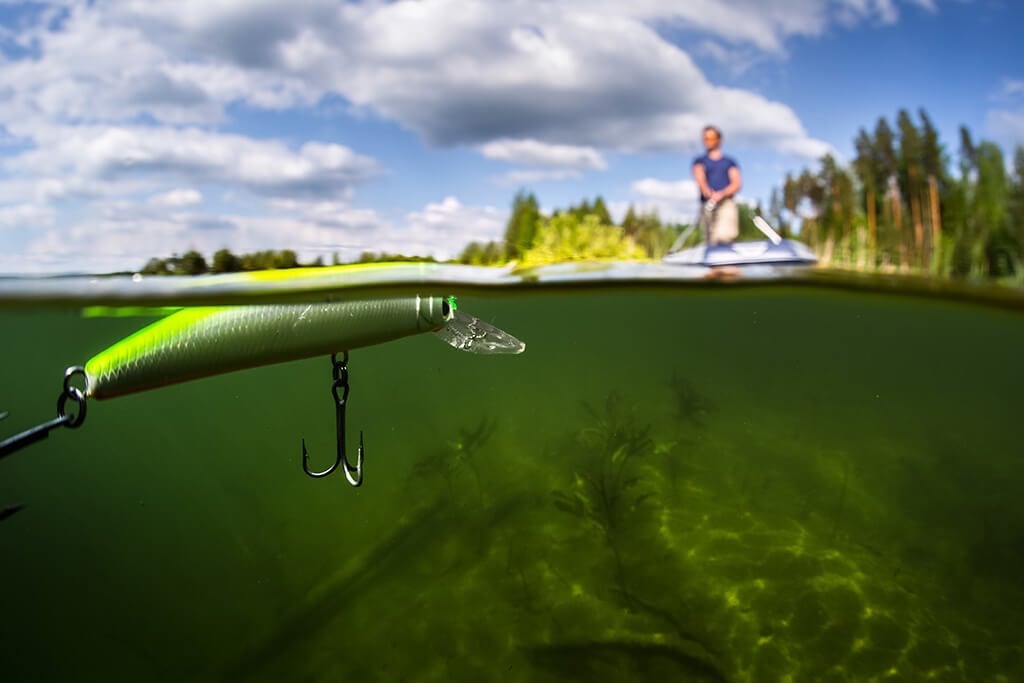
This is where things get interesting. People have created all kinds of weird and wonderful ways to tempt fish to bite, from robotic lures that wiggle and shake to a few strands of hair mimicking a fly or a beetle. They take some getting used to. However, they can be highly effective once you know what you’re doing.
The main reason people use artificial bait is that it’s fun. You have to pick and present the right lure in the right way, depending on the when, where, and how you’re fishing – not to mention what you’re after. There’s a lot of trial and error, and anglers can spend their entire lives honing their skills with a single type of lure.
There are some practical reasons to use artificials, too. For starters, they don’t go bad. You can use the same lure for years and cast it right back out without re-baiting your hook when the bite is hot. Lures are also versatile. There’s a color for every occasion, a shape for every situation. And if all else fails, you can always tip them with a little bait to improve your odds.
Choosing the Right Bait or Lures
You know the main types of bait you can choose between. But which one’s right for your next fishing trip? It depends on a lot of factors, most notably the fish you want to catch. We covered some of the most common targets in detail above. If that doesn't help, here are some general pointers on selecting the right bait for any occasion.
Sight or Scent
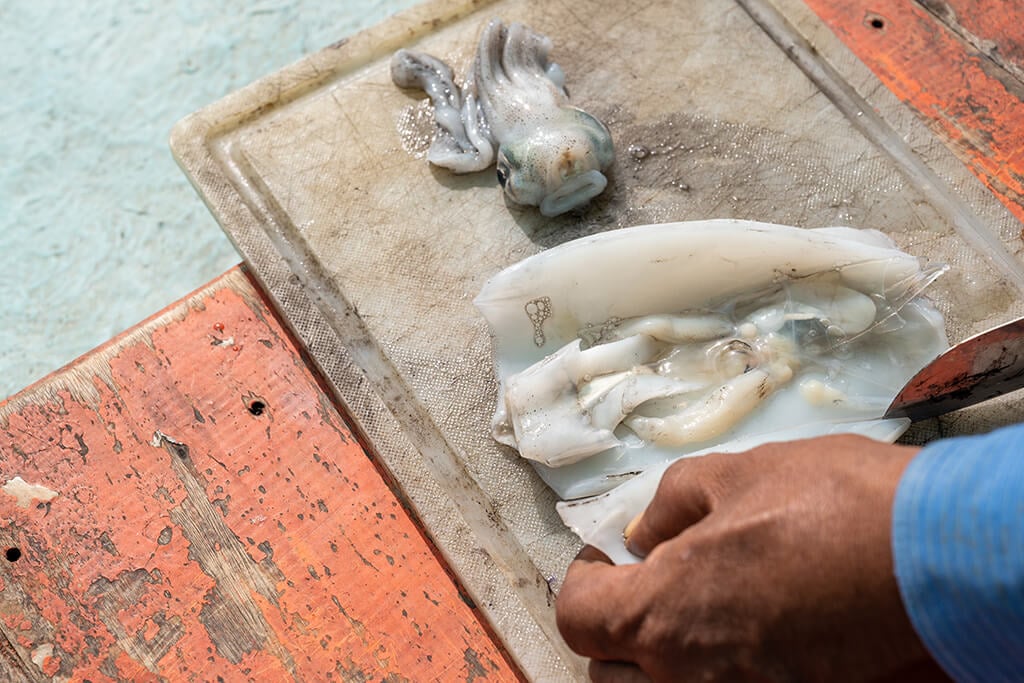
As the old saying goes, “To catch a fish, you need to think like a fish.” Fish have three main ways of hunting: sight, scent, and movement. Some sniff out prey; others use their keen eyesight to track it down. On top of this, all fish can detect movement in the water with their lateral line, although some do it better than others.
Know your enemy and use that knowledge to your advantage. Use flashy, colorful baits to draw out sight hunters like Pike or Billfish. If you’re after scent specialists like Catfish, prioritise smell and movement. You can use live or artificial bait for both of these, just focus on the things that make your target tick.
Keep It Local

As we mentioned above, one of the key factors for successful bait is whether it’s part of the local food chain. This is especially important when targeting migratory fish. They spend much of their lives chasing schools of smaller fish. Find out what’s topping their menu, and use that.
This doesn’t just apply to natural baits, mind you. It’s just as important when selecting lures. Fundamentally, lures work by mimicking local forage fish. Learn what your target is already eating, then pick a lure that looks and moves like it. This is the reason why there’s no one “best” lure – it all depends on when and where you’re fishing.
Match the Hatch

Fish come in all shapes and sizes – and that makes a big difference when it comes to catching them. Big fish put up more of a fight, but they’re also the best breeders, and vital to maintaining healthy fish stocks. Older fish are also more likely to hold nasties like mercury or ciguatera.
Why are we saying all this? Because you should think about more than just the species of fish you want. Think about which fish you want. If you’re fishing for food, target medium-sized fish with medium-sized baits. Chasing trophies? Size up your bait to match.
Where to Get Fishing Bait
You’re now familiar with the basics of what to use and why. The rest comes down to practice. Time to grab some bait, hit the water, and start reeling in fish! Just one problem, though: where should you get your bait? Obviously, this varies from place to place, but here are three main ways of getting quality fishing bait.
Catch It
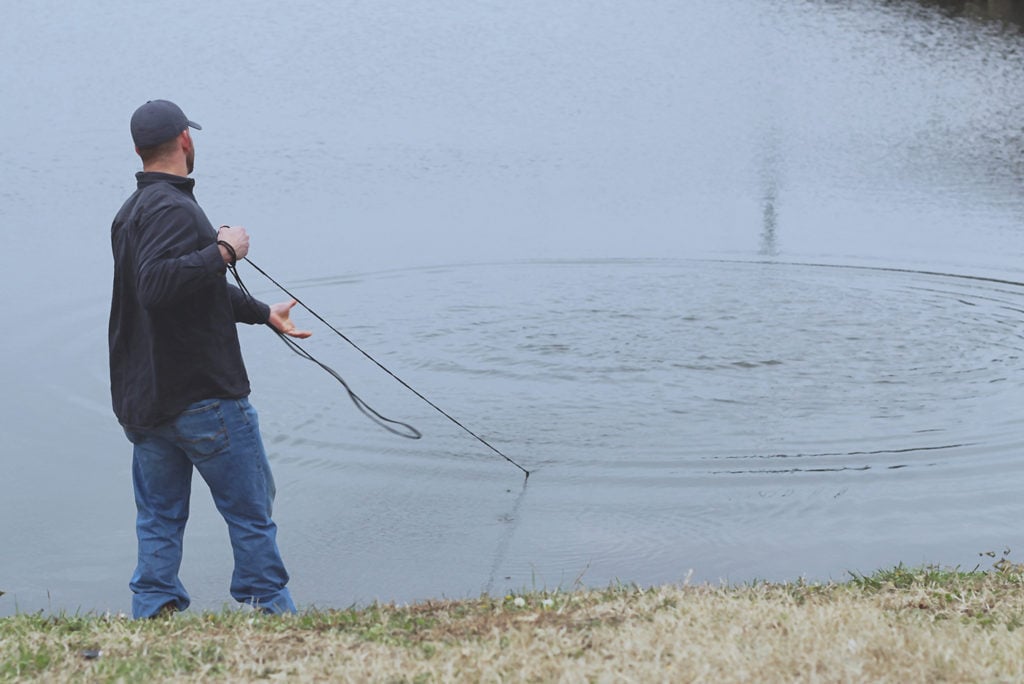
If you’re using live bait, catching it is always a great way to go. It’s cheap and easy, and you know you’re not introducing anything new into the area. After all, the last thing you want is to accidentally release an invasive species!
Even if you're using cut bait, it can make sense to catch it. It’s a common tactic to work your way up the food chain, catching smaller fish, then cutting them up to tempt in something bigger. In fact, the fresher dead bait is, the more effective it will be.
Make It
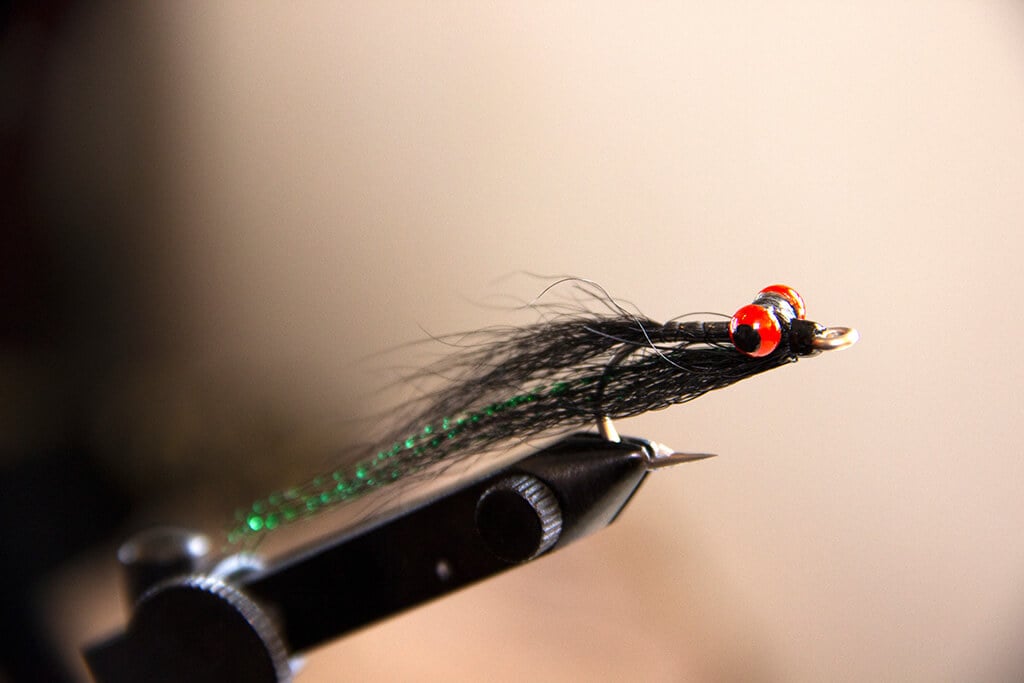
It’s worth making one thing clear from the get-go: You absolutely will not save time or money by making your own lures. So, why do people go to all the trouble? Because it's fun! Nothing beats the satisfaction of making your own lure, then using it to reel in some dinner. It’s a hobby in its own right, especially among the fly fishing crowd.
The one exception here is chum. Good quality chum is expensive to buy and pretty easy to make at home. The process is messy and gives off a heck of a stink, but it can save you a pretty penny in the long run – especially if you catch the main ingredients yourself. You can find a great intro to making chum here.
Buy It

Don’t feel like catching your own bait, or toiling for hours to make one ineffective lure? Fair enough. Most people just buy their fishing bait, and there’s absolutely nothing wrong with that. Tackle shops are an obvious place to start, but gas stations, piers, and marinas are also a great bet.
A note on quality if you’re buying natural baits: Always make sure live bait is, well, lively. The fish should be fit and healthy, actively avoiding being scooped out of the tank. If you’re buying dead bait, check the eyes to make sure it’s fresh. Quality frozen bait is cheaper and often more effective than old “fresh” bait.
More Than Just a Worm on a Hook
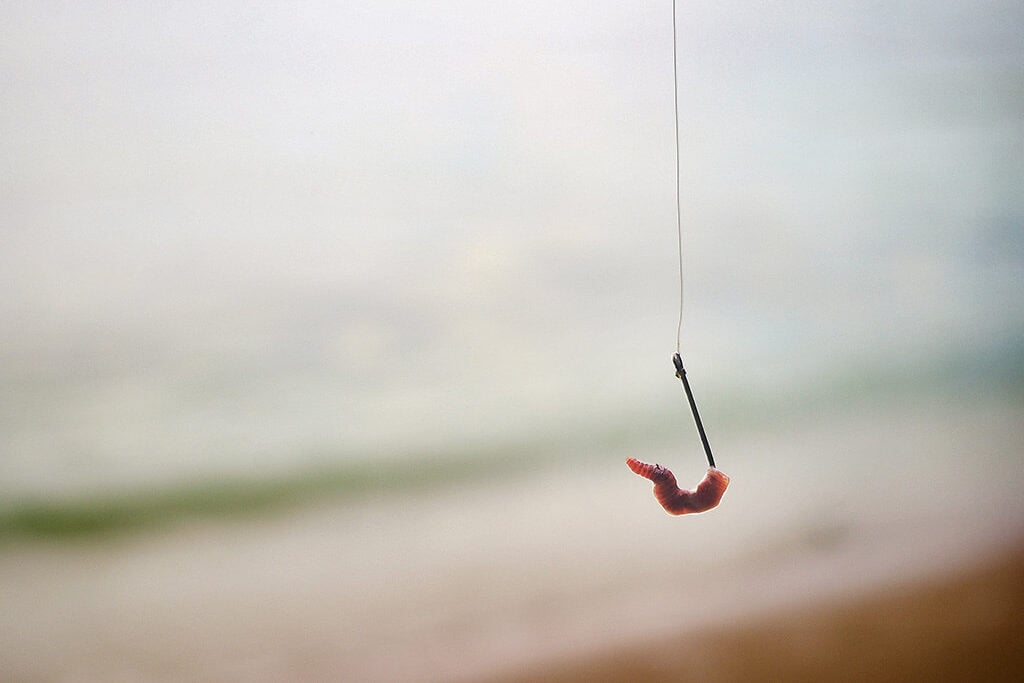
We stayed away from the nitty gritty of individual baits and lures today, and with good reason: the best bait depends on the day. Sure, you could throw a live shrimp at just about anything and it would probably take it. But learning how to tailor your choice to where, when, and why you’re fishing will make you a much better angler in the long run.
More importantly, a lot of the choice is down to personal preference. Some people only fish with lures. Others like using combinations of live and artificial bait. There's no wrong way to fish as long as you're having fun. So what are you waiting for? Grab your rod, find a charter boat near you, and get those hooks in the water!
